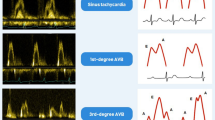Abstract
Objective
We investigated whether in vivo closed–chest left ventricular pressure–volume measurements would yield similar values for LV hemodynamics compared with open–chest PV measurements under several anesthetics.
Methods
The right common carotid of C57Bl/6 mice was cannulated with a combined pressure–conductance catheter and inserted retrogradely into the left ventricle in the closed–chest model. The open–chest model consisted of an abdominal approach involving the opening of the thoracic cavity by transverse opening of the diaphragm and ventricular catheterization by apical stab. Measurements were performed under urethane or pentobarbital intraperitoneal injection anesthesia.
Results
Cardiac function in the open–chest model was characterized by larger ejection fraction and stroke volume with a leftward shift in ventricular volume compared to the closed–chest model. Further observed characteristics include low endsystolic pressure and arterial–ventricular coupling mismatch in the openchest model. Arrhythmias were not detected in either model.
Conclusion
Murine cardiac function determination via open–chest or closed–chest protocols is sensitive, reproducible and comparable. The choice for open– or closed–chest pressure–volume measurements in mice depends on the aims of the study.
Similar content being viewed by others
References
Armstrong JM, Lefevre-Borg F, Scatton B and Cavero I (1982) Urethane inhibits cardiovascular responses mediated by the stimulation of alpha-2 adrenoceptors in the rat. J Pharmacol Exp Ther 223:524– 535
Atlan H, Thoma J (1987) Solvent flow in osmosis and hydraulics: network thermodynamics and representation by bond graphs. Am J Physiol 252:R1182–R1194
Chacko VP, Aresta F, Chacko SM, Weiss RG (2000) MRI/MRS assessment of in vivo murine cardiac metabolism, morphology, and function at physiological heart rates. Am J Physiol Heart Circ Physiol 279:H2218–H2224
De Windt LJ, Willems J, Reneman RS, Van der Vusse GJ, Arts T, Van Bilsen M (1999) An improved isolated, left ventricular ejecting, murine heart model. Functional and metabolic evaluation. Pflugers Arch 437:182–190
Dekker AL, Geskes GG, Cramers AA, Dassen WR, Maessen JG, Prenger KB, van der Veen FH (2001) Right ventricular support for off-pump coronary artery bypass grafting studied with bi-ventricular pressure-volume loops in sheep. Eur J Cardiothorac Surg 19:179–184
Doevendans PA, Daemen MJ, de Muinck ED, Smits JF (1998) Cardiovascular phenotyping in mice. Cardiovasc Res 39:34–49
Faunt KK, Cohn LA, Jones BD, Dodam JR (1998) Cardiopulmonary effects of bilateral hemithorax ventilation and diagnostic thoracoscopy in dogs. Am J Vet Res 59:1494–1498
Feher JJ, Ford GD (1995) A simple student laboratory on osmotic .ow, osmotic pressure, and the re.ection coef.cient. Am J Physiol 268:S10–S20
Feldman MD, Mao Y, Valvano JW, Pearce JA, Freeman GL (2000) Development of a multifrequency conductance catheterbased system to determine LV function in mice. Am J Physiol Heart Circ Physiol 279:H1411–H1420
Georgakopoulos D, Kass DA (2000) Estimation of parallel conductance by dualfrequency conductance catheter in mice. Am J Physiol Heart Circ Physiol 279:H443–H450
Georgakopoulos D, Mitzner WA, Chen CH, Byrne BJ, Millar HD, Hare JM, Kass DA (1998) In vivo murine left ventricular pressure-volume relations by miniaturized conductance micromanometry. Am J Physiol 274:H1416–H1422
Hoit BD (2001) New approaches to phenotypic analysis in adult mice. J Mol Cell Cardiol 33:27–35
Hoit BD, Ball N, Walsh RA (1997) Invasive hemodynamics and force-frequency relationships in open- versus closedchest mice. Am J Physiol 273:H2528– H2533
Janssen B, Debets J, Leenders P, Smits JF (2002) Chronic measurement of cardiac output in conscious mice. Am J Physiol 282:R928–R935
Kass DA, Hare JM, Georgakopoulos D (1998) Murine cardiac function: a cautionary tail. Circ Res 82:519–522
Little WC, Cheng CP (1991) Left ventricular- arterial coupling in conscious dogs. Am J Physiol 261:H70–H76
Nemoto S, DeFreitas G, Mann DL, Carabello BA (2002) Effects of changes in left ventricular contractility on indexes of contractility in mice. Am J Physiol Heart Circ Physiol 283:H2504–H2510
Palmen M, Daemen MJ, Buehler A, Bronsaer RJ, Zimmermann R, Smits JF, Doevendans PA (1999) Impaired cardiac remodeling and function after myocardial infarction in FGF-1 transgenic mice. Circulation 100:250
Rockman HA, Hamilton RA, Jones LR, Milano CA, Mao L, Lefkowitz RJ (1996) Enhanced myocardial relaxation in vivo in transgenic mice overexpressing the beta2-adrenergic receptor is associated with reduced phospholamban protein. J Clin Invest 97:1618–1623
Schreuder JJ, Steendijk P, van der Veen FH, Al.eri O, van der Nagel T, Lorusso R, van Dantzig JM, Prenger KB, Baan J, Wellens HJ, Batista RJ (2000) Acute and short-term effects of partial left ventriculectomy in dilated cardiomyopathy: assessment by pressure-volume loops. J Am Coll Cardiol 36:2104–2114
Sunagawa K, Maughan WL, Sagawa K (1985) Optimal arterial resistance for the maximal stroke work studied in isolated canine left ventricle. Circ Res 56:586–595
Tanaka N, Dalton N, Mao L, Rockman HA, Peterson KL, Gottshall KR, Hunter JJ, Chien KR, Ross J (1996) Transthoracic echocardiography in models of cardiac disease in the mouse. Circulation 94:1109–1117
Yang B, Larson DF, Watson R (1999) Agerelated left ventricular function in the mouse: analysis based on in vivo pressure- volume relationships. Am J Physiol 277:H1906–H1913
Author information
Authors and Affiliations
Corresponding author
Rights and permissions
About this article
Cite this article
Lips, D.J., v. d. Nagel, T., Steendijk, P. et al. Left ventricular pressure–volume measurements in mice: Comparison of closed–chest versus open–chest approach. Basic Res Cardiol 99, 351– 359 (2004). https://doi.org/10.1007/s00395-004-0476-5
Received:
Revised:
Accepted:
Published:
Issue Date:
DOI: https://doi.org/10.1007/s00395-004-0476-5




